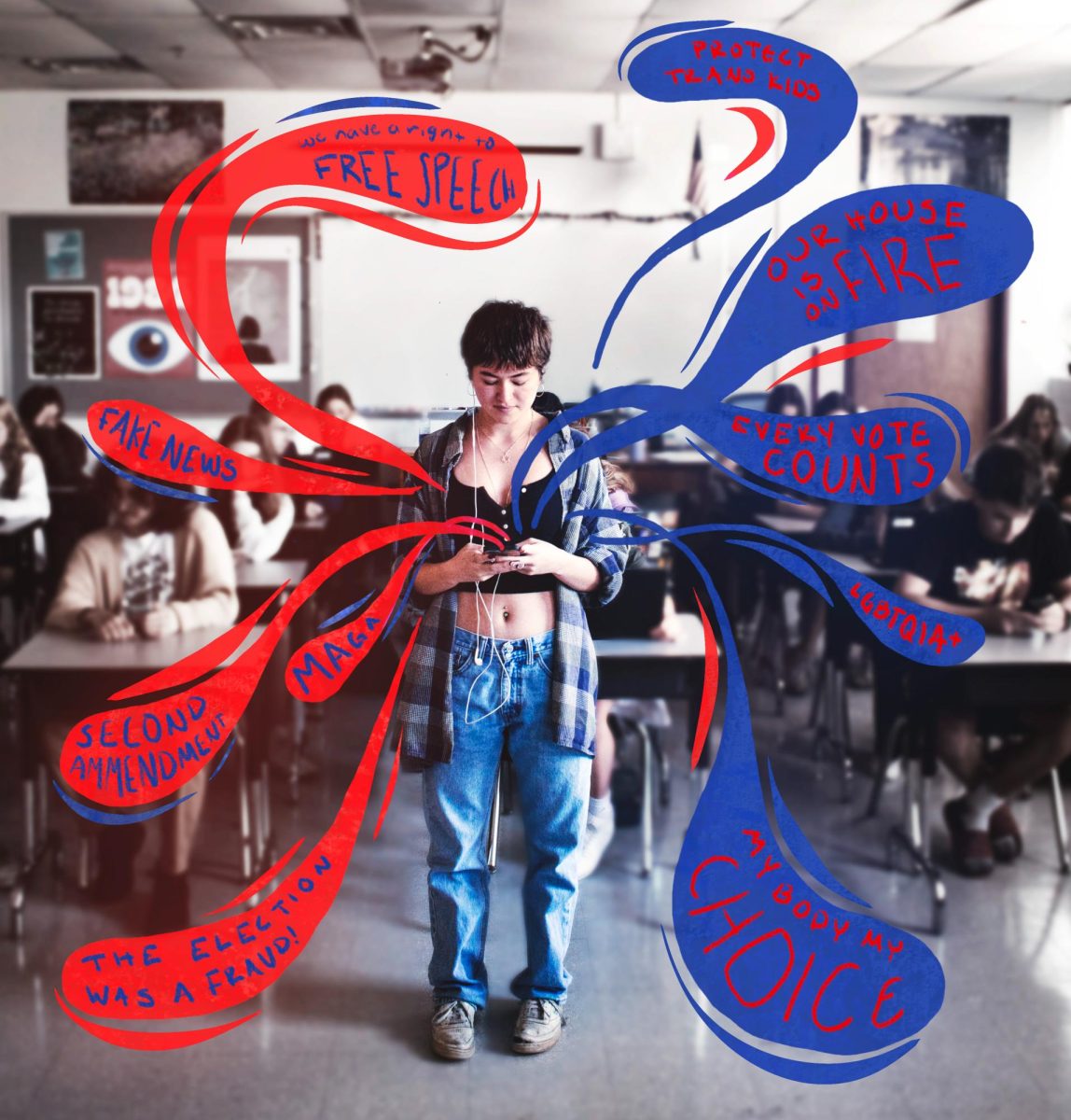“Extra! Extra! Read all about it!” These were the shouts of 20th century newsies. Today, Brooklyn remains plenty loud, yet, the news’ ever increasing demands are not from newsies, but the relentless “BREAKING NEWS” notifications on every phone.
Journalism has always been seen as a critical component of democracy in the United States; by giving everybody a voice, it epitomizes the “free speech” component in the Bill of Rights. During the 19th century, the Industrial Revolution introduced technology that revolutionized news media by making production faster and papers more accessible. From there, it didn’t take long for radio news, then television news, to gain traction. Today, newspapers and radio are fading, while online news continues to grow. Minute-by-minute updates are available worldwide through live broadcasts, and social media reposts ensure everyone has seen the latest headline. While the evolution of the news has improved accessibility, the incessant flood of negative events can be challenging to endure.
News fatigue is the state of mental exhaustion, and often anxiety, one experiences resulting from the overconsumption of negative news. A Pew Research Center analysis found that, in only six years, the number of U.S. adults who claimed to follow the news most or all of the time fell 13%, from 51% in 2016 to only 38% in 2022. However, this trend is not exclusive to adults – the same analysis reports a decline in news consumption across age groups.
As persistent coverage grants people more media access, it has become increasingly difficult for newspapers to gain and maintain readership. The solution? Clickbait. Exaggerated, misleading and blatantly dishonest headlines are written to provoke readers. A 2016 joint study by researchers at Columbia University and the French National Institute found 59% of articles shared on Twitter weren’t clicked on, indicating people are sharing clickbait articles without reading them. Publishers, desperate for engagement and profit, often compromise journalistic standards and resort to attention-grabbing headlines.
“The 24-hour news cycle is only effective when there’s actually breaking news; that’s rare.” Christopher Harbaugh, former journalist and Madison special education teacher, said. “When there isn’t breaking news the ratings-driven 24-hour networks attempt to keep viewers from changing the channel by manufacturing “breaking news.” Newscasts are often nothing more than speculation, conjecture and rumor-mongering. This rightfully leads to accusations of bias and partisanship.”
Therefore, the inflammatory nature of the modern news environment is not only a result of intentionally argumentative writing, it is also a product of the media’s inclination to create disaster where none exists. Social media capitalizes on the human tendency to prioritize catastrophe with algorithms designed to promote controversial or horrifying content because it increases user engagement.
Even news free from exaggeration can unintentionally impact the anxiety levels of readers, often due to the nature of reported topics.
An author aims to inform about carbon emissions in 2023, yet the reader ends up feeling disheartened rather than enlightened.
An article intending to entertain by recapping Grammy red carpet looks inadvertently causes the reader’s self-esteem to plummet, leaving them insecure rather than enthralled.
An article about the hardships of Ukrainian refugees serves as a call to action for its American audience. Instead, the reader feels helpless, oceans away and unsure of how to provide aid.
Dozens of things go into how anything – an article, a book, a speech, a TikTok – are interpreted. The writer’s intentions, tone and articulation, yes, but also the audience’s comprehension, bias, current state of mind and background knowledge. The difficulty of separating oneself from the news is only exacerbated by the little things which can make a topic feel more personal than it is.
Most Americans are fortunate enough to not be the subject of the news; there is a fairly significant degree of separation between them and what they read. Still, for Madison students, the news often feels closer than it is. The Northern Virginia suburbs, Vienna included, exist because of the jobs the nation’s capital creates, jobs many Madison parents hold. Rather than the seven degrees of separation from Kevin Bacon, it’s the three degrees of separation from any given United States senator. Marine One is not an uncommon sight and national news articles are often based 20 minutes from home, whether that be a story about the House Speaker being ousted or a press release from Amazon headquarters. Even stories from across the world have a connection to home because the United States’ involvement comes from D.C.
Yet feeling close to the news and being the subject of the news are two very different things. Living in a democracy means everyone can hold political influence, but that influence rarely comes without years of dedicated work. Actively engaging with news that one deeply cares about is understandable, but for the average person scrolling through the News app while waiting for their microwave popcorn, it is enough to read, learn and move on.
News is ever present as sources continue to fight for attention. Still, it is up to the reader to determine their personal investment. Newsletters are one way to combat the detrimental impacts of the news; sites like “The Flipside” and “1440” offer regular updates in digestible portions. Through summaries such as these, readers can learn enough to stay up to date. If they’re particularly caught by an issue they can follow up by finding more traditional long-form articles on the subject. Newsletters’ short nature, and their prioritization of unbiased reporting can help not only to prevent news fatigue and anxiety, but push readers towards reading the news to learn, rather than to join an argument or respond with action.
Light hearted and solution-oriented news can also play a role in making the news more approachable. Solution-oriented news covers conflict, but demonstrates a path forward, leaving the reader a sense of hope. Carefree news reminds readers that there is still good in the world, like the nine-year-old boy who saved a cat from a tree, or the dog who got help when its elderly owner fell down the stairs. The level of atrocity in the world is still terrible, but there is also goodness.
“[The modern news environment] is really stressful, but setting aside a specific time to look at the news is a good way to stay informed and balance your mental health,” Caroline Fennel (’24) said.





